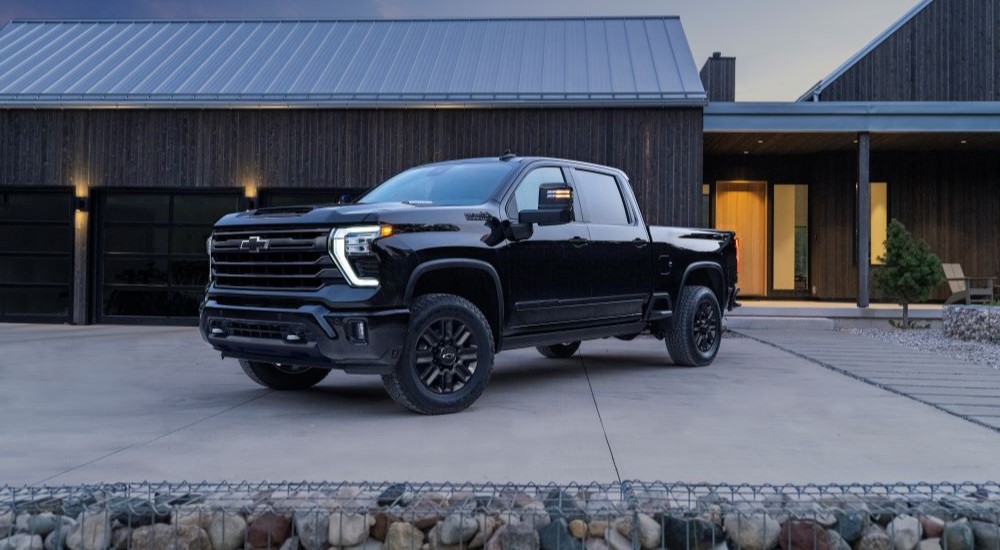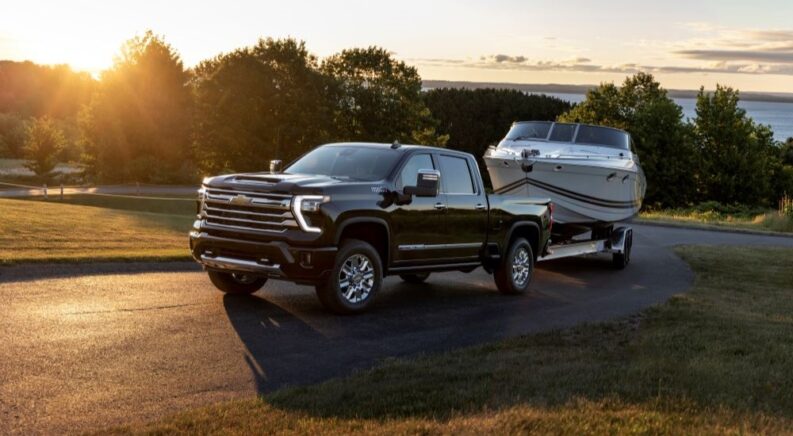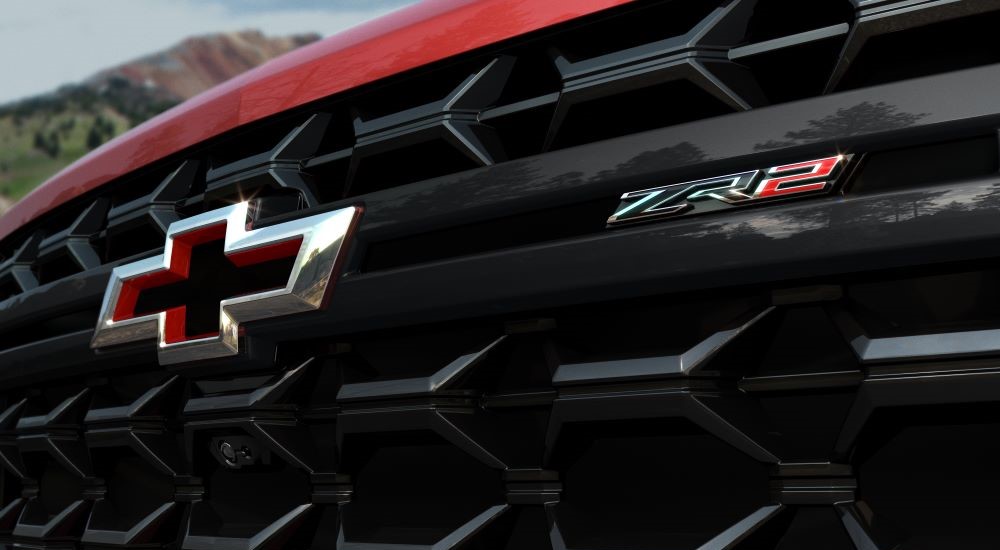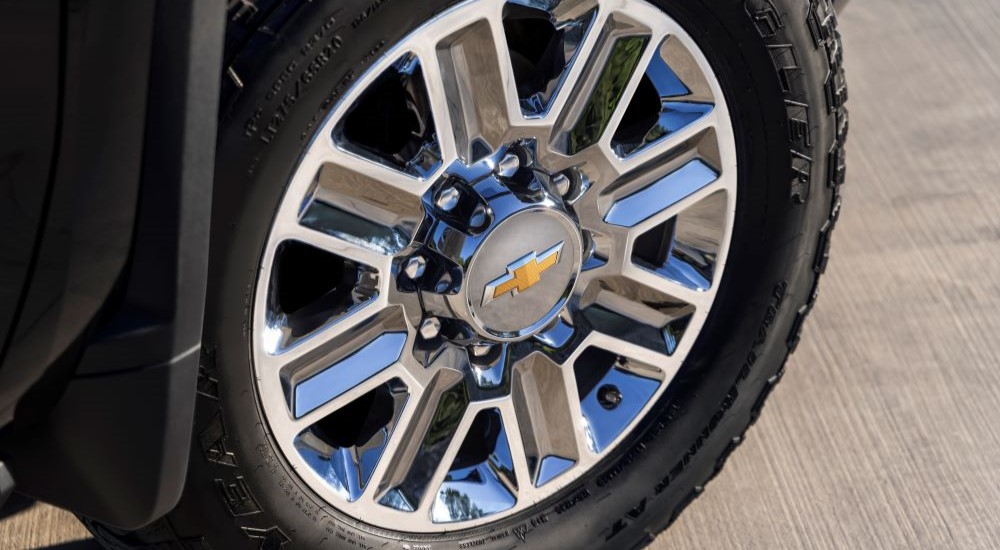There’s never been a better time for laborers to own a pickup truck. In addition to style and build improvements, the amount you can tow and haul in a pickup has grown exponentially. Improvements in the structure of pickups have let manufacturers brag about mind-boggling numbers. The 2024 Chevy Silverado 2500 HD, for instance, comes with a towing limit of 22,500 lbs if you opt for its 6.6L turbo-diesel V8 engine. Even the Silverado’s EV version can tow a heck of a lot, topping off at 10,000 lbs. Normally, EVs have far smaller limits; certainly, half a decade ago, no one would expect an EV truck to have that capability.
There are a lot of benefits to the increased towing limits beyond even the obvious. Far too many drivers have tried to increase the amount they can tow by purchasing equipment on their own, only for disaster to ensue when it didn’t work out as they hoped. With better batteries and engines, though, drivers are increasingly able to purchase a truck that exceeds their needs, so no additional—and possibly mistaken—tinkering will be necessary.

Why Such High Numbers? Is There a Demand?
Easy to assume these higher poundages are for bragging rights as opposed to actual use. And for some people, yeah, that’s true! It’s fun to say you have a pickup truck that can pull 22,500 lbs. It sounds cool in conversation. Who wouldn’t want that? Everyone around you looks impressed when you drop those numbers, and suddenly you’re the center of attention at the barbecue.
But the benefits aren’t just social capital: the ability to tow a trailer as heavy as 22,500 lbs can be a real boon to anyone who uses their truck for labor. Currently, infrastructure projects in the United States are booming thanks to legislation passed in 2021 and 2022 that invested money in repairing and building roads, tracks, and bridges. Demand for pickups that can handle heavy loads has skyrocketed and will only continue to grow as funding continues to trickle out to various industries. So long as bridges and roads are constructed, powerful and capable pickups will be useful. Being able to cut your number of trips in half—because your truck can now tow double the amount it used to—is an incredible advantage for any company; it saves time and money, two valuable commodities for any successful business.
The individual driver wins, too. If you’re not someone who tows for work, it might not seem intuitive that you’d need a truck with so much towing ability. However, if you’re someone who likes to take road trips, you’ll know how useful it is to be able to bring a lot with you—especially if your destination is the great outdoors instead of a swanky hotel. For campers, it’s always nice to have as many items from home as possible instead of relying on the bare minimum. It’s also nice to know you can save a few bucks by bringing along as many accessories as you want instead of purchasing them while you’re on vacation. Peace of mind improves when you know you can bring whatever you desire.
Plus, the average American moves about 12 times in their lives. A pickup truck that can help you move can be a lifesaver, especially if you’re someone who has to pick up and go more often than the average American. If your job means you have to relocate every year or two, a pickup with a high towing limit is a gift. Anyone who has moved recently can remember how every extra inch counts when you’re trying to move. Moving can be an unpleasant process, but a truck that can handle a lot of poundage can make the move proceed smoother.
Are There Downsides to Trucks With High Limits?
If you’re smart, there’s not. But there are some reasons to be cautious. With limits this high, you’re less likely to run into the problem of towing more than you’re able to, but it’s still important to be careful, as you can end up assuming your truck can tow anything only to find out you’ve pushed a little past your limit.
Yet, for my money, the biggest issue to watch for isn’t if you’re towing too much; it’s if what you’re towing limits your visibility and driving ability. Now that you can tow more, it might seem great to upgrade to a bigger trailer or boat—but have you considered how that will affect your driving? Fortunately, manufacturers have.
Improved Towing Meets Improved Technology
Let’s take the aforementioned 2024 Silverado 2500 HD as an example. With its 22,500-lb limit, you can tow quite the load. But now that you’re on the road, you realize your visibility isn’t as great as you normally like. Are you in trouble? Not necessarily. Chevy has some great features to help you overcome problems that trailering can cause. None of these features are substitutes for excellent driving, mind you, so you still want to exercise caution and skill, but they can be a tremendous asset.
Chevy offers a safety feature called the Trailer Side Blind Zone Alert. This does just what it suggests, alerting you when a vehicle is in the blind spot of your trailer. You then know to be more reserved if you’re about to change lanes or are approaching a sharp turn. I imagine, as this feature becomes standardized and better known, more and more drivers will become confident in driving past a trailered vehicle.
There’s also the Transparent Trailer View, which is, quite frankly, really freaking cool. Using combined camera views, it simulates a “see-through” rear view on your touchscreen display—seeing behind your truck as if your giant trailer ISN’T there—so you know what all is happening behind you, given that your rearview mirror will be rendered rather moot. This system can adapt to different types of trailers, so you need not feel you can only buy certain types. You cannot underestimate the level of security and confidence this feature can offer you.
Higher Limits Necessitate Greater Tech
There’s no sign automobile advancements will slow down any time soon. I fully expect that future models of the Silverado Heavy-Duty Series will come with even higher limits, for instance. It will offer stellar capability, as high towing limits are great for marketing purposes, but the technology to keep it safe will also need to keep pace. So far, manufacturers appear to understand this, emphasizing the safety features their technology can offer drivers. Of course, drivers will also need to be educated on not just how to use it but that they should use it instead of simply relying on their own eyes and the turn of their heads. This should be something for dealerships to explain to potential buyers, especially as towing limits increase.
Will there eventually be a breaking point? Probably. Even if the limits keep increasing, there are only so many trailer sizes that can fit in a single lane. But manufacturers love to brag—and so, too, do drivers—which means we likely haven’t seen the end of mind-boggling numbers. Expect to see these numbers continue to tick up as the decade goes on and as infrastructure projects roll out.






